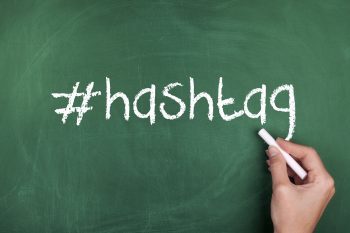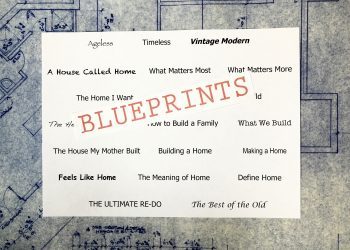Barbara Delinsky's Blog, page 4
March 8, 2017
A Woman’s Place
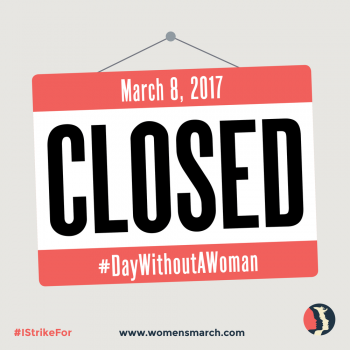
I remain devastated by the recent election, in part for how it relates to being a woman. Much has been said about the message Hillary Clinton’s loss sends to young girls. But what about me? What about other women my age? What about the message her loss sends to us?
I’ve always worked. From the time of my college graduation, which coincided with my now almost 50-years-long marriage, I held a job. I was the one who got the graduate degree while working part-time to pay the rent while my husband focused solely on getting his law degree. When said degree translated into endless hours in the office, I raised our children largely alone, cooked and cleaned and paid the monthly bills. When money was tight, I worked to help pay those bills, even with three children at home. When marital challenges arose, I made the concessions good wives make. As a homemaker, I sacrificed female friendship, a.k.a. lunches with friends and girls’ weekends, for the sake of making sure my family had clean clothes and hot dinners. As a writer, I worked around the kids’ schedules, typing away at dawn, during school hours, and late into the night. I was chronically exhausted. But I must have done something right, because my three children are now gainfully-employed men with solid marriages and children of their own.
My story isn’t unique. I’ve heard similar ones from other women who never expected to have careers but simply did what had to be done. These women were on the front lines of the work-home struggle. And where are we now?
I’m 71. All these years later, I thought things had changed. I thought women were finally on equal footing with men. I thought we had earned that right.
Apparently not. Apparently we’re only good as wage earners when it benefits someone else. Apparently our work is appreciated only until it threatens the status quo.
Call me self-pitying, but there it is. I feel used. Isn’t this what today’s Women’s Strike is about? Are we truly indispensable?
Every woman I ask claims that given her qualifications, had Hillary been male, she would have won the election. Every man I ask waffles. Well, he says, I don’t know. You have to admit, he says, that she isn’t warm and fuzzy. You have to admit, he says, that she is ambitious.
Here we are, in 2017, and this is how they see the world? I remain stunned by that. I thought America was better. I thought we were more enlightened, more respectful. Apparently I’ve been living in an alternate universe – one where intelligence is valued and hard work rewarded – where honesty is key, and religion means decency – where cream rises to the top.
I’m an optimist. But the loss I feel now, as a woman, is profound. Will I stop working in protest? I considered doing it for the sake of solidarity. But I love writing. No man tells me to do it. Actually, women do. I write for many reasons, but prime among them is that my audience appreciates — no, waits for each book I write. My readers make me feel valued.
That’s it. You all make me feel valued.
Of the many books I’ve had published, consider one from 1997. It’s about a woman whose successful career so threatens her husband’s ego that he sues for divorce and custody of the kids. My own title for it was When Being Everything Wasn’t Enough. My publisher instead chose A Woman’s Place.
A woman’s place. Talk about irony?
Of my nine grandchildren, five are girls. They are being raised to value education and hard work, are being taught to take initiative and accept responsibility. At 4:30 in the morning on the day after the election, one of my sons texted to say, “Mom, what do I tell my daughter?” He is an educator, and after saying something to his five-year-old, he had to say something to his students.
I didn’t have an answer then. I still don’t.
March 1, 2017
Wading into the political

Politics and religion are the two things I avoid in my writing. Oh yes, my regular readers can guess my leanings. But I don’t discuss them outright in my books. My readers come from all walks – right and left, north, south, and central. They expect a good story, not a diatribe. And I respect their right to that.
Yet here I sit, struggling to come up with something meaningful to blog about, while the most important topic right now is political. And what I’m thinking is that my blog is different from my books. You’re not paying to read my blog, like you do to read my books. You can opt out at no cost whatsoever by simply closing the link.
So here’s your chance. Don’t want political? Close this link now.
Still with me? I’m so glad! Here goes.
Given last November’s election, the time for sitting silently on the sidelines has to be over. Without the voice of people like me who aren’t political activists but do represent the views of many, America is at risk of losing much of what makes us great. So, from time to time, I will be writing about things that matter to me as a generous taxpayer, a social liberal, and a patriotic American.
Take FAKE NEWS.
I despise this term. It grows from a need to discredit the media, which too often prints things that our current president doesn’t like. Combine the repeated use of this term with the recent banning of some press outlets from presidential briefings, and you have the kind of repression we see in dictatorships.
But what is FAKE about the NEWS we get? Generally, at least in mainstream outlets, the news consists of reports that are fact-based.
That said, the term FAKE NEWS makes me think. I grew up in an era where the evening news was 30 minutes, start to finish. There were ten minutes for local news, ten minutes for national news, and ten minutes split between weather and sports. Then that expanded. I’m not quite sure why, likely advertising money. But now, we have 24/7 news stations and news programs that run 3 hours at breakfast time, 1 to 2 hours at lunch time, and 3 hours at dinner time.
But, hell, how much news is there to report?
So we get lesser news, like the drunk driver who veers onto the sidewalk, terrifying people but causing no harm. We get human interest stories. And we get opinion pieces. Opinion pieces are problematic. By definition, being someone’s opinion, they have a slant. An opinion piece on Fox News is going to be different from one on MSNBC. But we all know that. Doesn’t our president? Isn’t what makes America great the fact of diversity of opinion?
That said, I hate opinion pieces in this polarized political climate. I don’t care which side writes them, they’ve simply become too ugly. In an effort to avoid them, I’ve stopped watching news shows and rely, instead, on breaking-news updates that appear on my phone through the day. They tell me what’s happening, without giving an opinion on it.
I don’t need someone else’s opinion. I have plenty of my own, thank you.
And yes, there are times when the press makes a mistake, but apologies and corrections usually follow. This is what responsible entities do.
I’m sure there is FAKE NEWS out there – as in, the reporting of incendiary conspiracy theories that lack facts or the deliberate reporting of a story known to be false. But is that done by credible media outlets? Certainly less often than our president would have us believe.
What we do get is different kinds of news offered with honest intent. There’s news NEWS, as in reports of what happened that day. There’s interpretive NEWS, as in discussions back and forth about the meaning of news NEWS. Some of what we get is even news that is rushed out in an attempt at an exclusive, breaking report, and naturally mistakes occasionally happen. But there is no ill intent in these.
There is ill intent in using the term FAKE NEWS. That’s what bothers me.
January 26, 2017
Emoji elegy
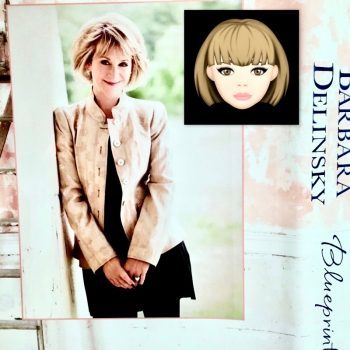 Not long ago, my nine-year-old granddaughter took my picture with her iPad and made an emoji of me. I loved watching her do it. She was totally adept at navigating her emoji app to pick the hairstyle most like mine, the color of my hair, eyes, and skin, the shape of my face and lips. As you see above, the final product is cartoonlike, but isn’t that what emoji are? And goodness, she makes me look so young. What woman in her right mind would object to that?
Not long ago, my nine-year-old granddaughter took my picture with her iPad and made an emoji of me. I loved watching her do it. She was totally adept at navigating her emoji app to pick the hairstyle most like mine, the color of my hair, eyes, and skin, the shape of my face and lips. As you see above, the final product is cartoonlike, but isn’t that what emoji are? And goodness, she makes me look so young. What woman in her right mind would object to that?
The first emoji appeared somewhere around 1998, originating in Japan as a “picture character” for cell phone use. Over time, their use spread to other devices, often as punctuation at the end of a sentence, a quick little statement of happiness, sadness, congratulations, or whatever. That said, I have both sent and received texts where the sole content is an emoji. It’s actually a great way to end a digital conversation, when you have nothing left to say but don’t want to abruptly disappear.
The descendants of Emily Post advise using emoji only when you’re sure they will be well received. I agree, and, for this reason, only use them with people I know. This especially applies to a business email, though some guidelines discourage using emoji in business notes at all. I do, assuming I have an ongoing relationship with the recipient.
The guidelines also discourage using emoji in serious situations. But what’s wrong with using a serious emoji? I’d actually make the argument that a carefully-placed emoji takes the edge off a serious email. In instances, again, where I know the recipient, I’ve used a frowning face, even a teary-eyed emoji.
So here’s a thought. I’m a passionate person. You readers of my books know that. I feel emotions strongly. When talking in person, my face shows what I feel. Perhaps this explains why I like using emoji. They are my written version of a facial expression.
Some people hate seeing emoji anywhere. Do you? Do you think they’re tacky?
On the other hand, do you like them as I do? Where do you use them most – on your phone? Tablet? Computer? With my grandkids, I’ll use multiples, like ending a text with five kiss-blowing faces. I still use a smiley face a lot, but my favorite emoji is the smiley with heart-shaped eyes. Do you have a favorite?
December 30, 2016
Confessions of a chronic dieter

I was a pudgy child, or so I saw myself. Others may have called me solid. One boy told me I wasn’t fat, just well-packed – like this was what a teenage girl wanted to hear from a boy she wanted to date?
I have been thinking of food all my life. Seriously. I don’t need a shrink to tell me that food fills emotional holes. The first one opened when my mother died, when eating made me feel less alone. I ate at exam time in college, when food filled the confidence hole. I ate when my kids were little, when food filled the frantic, what-do-I-do hole. I ate when I wrote, when food filled in missing words or plot twists.
Some would say I’m a stress eater, that food brings me peace of mind when nothing else does. Food has always been a comfort, and I don’t mean just “comfort food.” I’ll binge on whatever is around that makes me feel full.
If you’re looking at my photos right now and thinking, Yeah, right, please remember that body image is relative. I keep my weight down. When (not if, but when) it climbs ten pounds, I diet. Here are a few of the diets I’ve followed over the years.
900-calorie-a-day diet, supervised by a doctor. This was my very first formal dieting attempt. I was in high school, and the doctor was a local one with a reputation for this. I remember bringing hard-boiled eggs for lunch to the camp where I was a counselor, and I did lose weight.
Weight Watchers was the first group program I joined, though I half suspect I liked being with other women as much as losing weight. I’d just had a child, had no babysitting help, and felt isolated and alone. This diet was a common sense one. In the forty-years since, Weight Watchers has often reshaped itself, largely for marketing purposes, but I still like its moderate approach. Back then, I actually trained to be a group leader. I figured this was one way to keep the weight off, that if a whole class was looking at me, I didn’t dare gain back my weight. Then we moved. So, forget that.
Diet Center entailed not a group meeting but one-on-one meetings with a weight counselor. The diet was well-balanced, and the weigh-ins meant accountability. In time I lost the weight, grew complacent, and decided I could manage on my own.
For me, the problem with some of these formal programs was that they involved too much thinking. I was thinking all day long about other things, trying to coordinate complicated plots and complicated kids’ schedules. I wanted simple.
That’s why the South Beach Diet worked for me. I cut out carbs, but enjoyed protein. I’m simplifying this, of course, but it was pretty simple. This diet worked for my body. Not only did I lose weight, but, following this diet, my body felt really good.
In time, naturally, the cravings for even relatively healthy carbs like wheat bread or fiber cereal nixed this one. But I do return to it from time to time, at least in concept, and, assuming I’m diligent, it still works for me.
A couple of truths I’ve learned over the years?
First, the older I get, the less I can eat to maintain the same weight. This is not fair. But there it is.
Second, the older I get, the more health issues affect what I eat. For example, I’ve become lactose intolerant, so neither cottage cheese nor yogurt sit well. I also have osteoporosis, so I drink almond milk and snack on lactose-free aged cheddar, both of which are more caloric than I’d like.
Third, not every diet works for every body. I’ve tried many versions of the hot new diet of the month, and struck out more often than I can count. I’m probably more of a Mediterranean Diet person when it comes to foods that I like and that like me, though I don’t follow this diet like a religion.
Fourth, accountability is important. I actually work with someone now, here at my house, who comes to see me with her scale. I may eat poorly every so often, but not in the few days before she comes. Her scale doesn’t lie.
Fifth, moderation is key. The holiday season is newly done, but if it’s not Christmas, it’s an anniversary or a birthday or a house-warming. I love sweets. Give me cake with sugar frosting, brownies with chocolate sauce, or eggnog, and I’m in heaven. If I deprive myself, I feel deprived, and what happens then? I get home from wherever and binge on whatever, none of which tastes as good as the goodies offered at the party. Better, I’ve decided, to take a little of this and a little of that at a party – to allow myself to enjoy these treats – and then watch what I eat for the rest of the day without feeling I’ve broken my diet.
So here we are, another year, another resolution. This year I’m trying the ultimate in moderation — a three-meals-only diet, meaning that I eat only at meals, those meals being breakfast, lunch and dinner. This diet is about moderation. It’s about awareness of what I eat, when I eat it. If I still need a little something between meals, I’ll modify that to allow for a snack. I’ll give myself permission to have a slice of toast or some cheese or fruit, and I’ll make sure I have my favorite kinds of each of those, so that they become a treat.
Sure, kiwi is expensive. But I’m worth it!
November 30, 2016
Word Revolution, Part 2: YOU
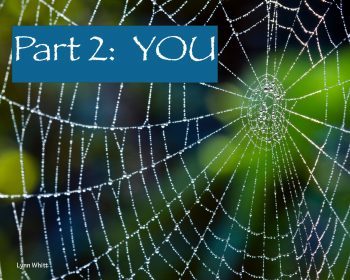
You wordsmiths, you! Thanks so much for reading last month’s blog and jumping in with your own suggestions. I was thrilled with the words you posted – and dismayed at not having thought of them myself! In an attempt to rectify the latter, I hereby revisit the word revolution issue. Just to refresh your memory, last month I listed words that have taken on new and previously unimagined meanings. This month, it’s your turn. I may be organizing them in a blog, but these evolved words all came from you.
TWEET. Of course. Not a bird, but a 140-character message posted on one arm of … wait for it … SOCIAL MEDIA. Would we have guessed what that term meant twenty years ago? But who doesn’t know it now?
SWIPE. Used to be, we used that word to describe brushing past a person or car, as in side-swiped. Now it’s brushing a finger left or right to move through mobile apps.
WINDOWS means more than the glass we look through to see outside or in, and CLOUD goes way beyond those white things we see in the sky.
A MOUSE doesn’t necessarily eat cheese. To SURF does not require a board. CODE is far, far, far more complex than four secret digits you punch in to unlock a house, car, or alarm. A CELL is no longer just something for bad guys. And TEXT has meaning well beyond a passage in a book.
Sadly, COKE isn’t something you necessarily drink. DISH, as a verb, can mean gossip. Fishing is often spelled PHISHING. SHIP, the verb, can mean something entirely different from sending something to someone, but even after researching the urban slang meaning of that one, I don’t get it.
FACETIME I get. I do it all the time with my grandkids. I also get BAD meaning good and WICKED meaning awesome.
I could mention new intonations we use when drawling, “Seriously,” “Ya think?” and “Really,” but that’s getting off point – which is that words keep changing. I wonder what’s coming next. If you were to speculate, what would you say?
October 26, 2016
Word revolution
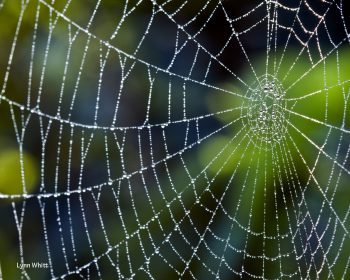
Here’s a fun exercise.
But first, a bit of philosophy. Contrary to many people in the news who use words to destroy, writers use them to create. I love words – love putting them together in a way that paints an action, a sentiment, a hope or a dream. I play with them endlessly when I write, modifying, exchanging, and reordering them until I read them a final time and whisper a blessed, “God, that’s good.”
I also love discovering other authors’ words, ones that I may not know well but should. When those words become part of my writing word-chest, I feel as if I’ve grown.
And then there are words I may have always known, that have taken on meanings undreamed-of years ago.
Take WEB. When I was growing up, a web was something Charlotte spun. Now it’s a worldwide cyber-platform. And CHIP. In my kitchen, a chip is chocolate, but this isn’t true of the chip in an electronic device. And APPLE, which is no longer only something you eat.
Then there’s FRIEND, used as a verb, as in friending as person on Facebook. And LIKE, as in clicking on a little heart icon to show your approval of a post. And, yes, POST, used as a noun and referring to something one has written that now others can see via said worldwide cyber-platform.
What about electronics terms, like ONLINE, E-BOOK, E-MAIL, VOICEMAIL, and APP? Okay, APP stands for application, but, seriously, did you know that? An APP is an APP, right?
There are other verbs, like DOWNLOAD, UPLOAD, and CUT-AND-PASTE. Funny, when I say the last, my mind still conjures the image of scissors and construction paper, and the smell of gummy white paste. Remember that? Or do you automatically think of the computer technique that CUT-AND-PASTE now is?
My grandkids are learning MOUSE SKILLS in the early elementary grades. Nope, not talking about playing rodent by scurrying along the edge of a room and disappearing into a tiny hole.
I won’t effuse on the word SELFIE, because I hate the concept, though there are people who consider a SELFIE the souvenir of choice for life adventures. Of course, I hate having my picture taken at all, much less of me by me. But that’s just me.
I do like VIRTUAL, as in virtual house tour rather than virtual truth, and VIRAL, not as in pneumonia but a video that meets with sudden fame.
CORE used to be the center of an apple. Now it’s the central part of a body that needs to be kept strong so that it can support the more vulnerable parts.
How about the word ORGANIC? I use it in ways now that I wouldn’t have dreamed of a while back. Can I define it? I’m not sure. It’s kind of a catchall for something that goes back to basics, or may connect with something else in an organic – uh, fundamental way.
So here’s the fun exercise. Can you think of words that are either brand new but already part of our lives, or that have morphed so much from their original meanings as to be new words after all?
If so, please put them in a comment below, and I’ll include them in a future blog!
September 26, 2016
Daring to dream

A dear friend recently celebrated a milestone birthday. After the food was eaten, wine drunk, toasts offered and dessert served, my friend rapped her glass for attention. She had a toast of her own to make, and, in the process, offered a word of wisdom. Follow your dream, she said, and told of something she had wanted to do all her life, that, after many close calls and much persistence, is finally now about to happen.
Follow your dream.
But what happens when you don’t have dreams?
I don’t. Not in the sense of life dreams. I grew up assuming I’d be dead by 45. My mother died at that age, so I would, too. My birthday wish, blowing out candles each year, was simply to live one more year.
Okay, I suppose that’s a dream. But it’s not like dreaming of living in Paris or being an actress or hiking the Appalachian trail. My dreams were all short-term, one year to the next. Even when I started writing, I took it one book at a time. I didn’t plan on amassing 80+ books to my credit, much less hitting the New York Times list however many times.
So here I am, still writing and in good health. What happens now?
I have goals. Not dreams. Goals. I want to finish Making Up, the book I’m currently writing. I want to see Scotland. I want to lose 5 pounds. These are not long-term life dreams. They’re just things that I want to do. A year or two ago, my list would have been different – and DO NOT use the words “bucket list” with me. They come from the phrase, “kick the bucket,” which means die, and having obsessed over dying for too many years, I’d rather be upbeat.
Goals imply something that can be realistically attained. I’m a realist. Goals work for me. I also like thinking of “wishes” and “adventures.”
Where do you stand on this? Is it important to have life-long dreams? Am I less complete a person for not having them? Or, to paraphrase that quote about love, is it better to have dreamed and lost, than never to have dreamed at all?
August 26, 2016
A Skeptic’s Guide to Hashtags
First, disclaimers. (1) I’m new to hashtags; I’ve only used them since I joined Instagram in April. (2) Hashtags have been the hardest part of social media for me to understand. (3) They make me feel old.
So I write this with a built-in bias. Please remember that.
I can’t tell you how many times I’ve searched Google for a meaningful telling of what a hashtag is, what it does, why it does it and when. And still the concept remains amorphous. It’s like a foreign language to me, which is surely a generational thing — though, in fairness, when I ask my sons, they can’t explain them well either.
Best I can gather, a hashtag is a method of connecting with people of like interest. That’s the phrase most often used — “connecting with people of like interest.” Simple enough. But here’s one of my problems right off the bat. Who are these people of like interest? Where are they? Are they writers? Are they women? How old are they? Attempting to answer these questions, I search a particular hashtag before I use it. Whoa. That is enlightening. Some of the people pictured are not people I care to hang out with. I can’t imagine having anything in common with them, much less their wanting to read my books. Some of the posts I see are off-color, others downright offensive. Do I want my posts appearing in the company of those posts?
But, okay. I get it. Gotta find the right hashtags. I do Instagram to connect with readers. So #books or #summerreading or #ilovebooks are good hashtags for me to use. See? I’m making progress.
The articles I’ve read tout using hashtags as a great way to bulk up the number of “likes” a post gets. So, is that what matters — the number of likes I get?
Well, it is. Kind of. At least, when you’re using Instagram for work, as I am. My publisher’s guru touts hashtags as a way to add followers and, hopefully, new readers for my books. In this sense, likes do matter, but I’ll only get them if I use the right hashtags. For books like Family Tree and Sweet Salt Air, both of which showcase knitting, using hashtags like #yarn or #knitting or #knittersofinstagram could get word of my books to someone who shares an interest in yarn and therefore might like these books.
Same with pets. #Dogs, #cats, #petsofinstagram, #goldenretriever – if my book has a dog or a cat, this lets animal lovers know it. Same with plants. Or pancakes.
There’s sex in my books. But I could never, ever use #sex. Can you imagine the kinds of posts using that hashtag? Euwww. #Love or #family might be a little sweeter, but the sheer number of posts under those ones makes them counterproductive. For instance, there are more than 900 million posts with #love, which means that my post will be instantly lost, buried by newer posts, then newer posts again. #Family is only slightly better with 172 million, #sisters with 30 million, #marriage with 4 million posts. Why use a hashtag at all, with those kinds of odds?
Better, I’ve found, to use hashtags with between 1,000 and 300,000 Instagram posts. These numbers may be arbitrary on my part. But they feel right to me. Also, the more specific a hashtag, the better. For instance, #siblingrivalry, with its 98,000 posts, is a better one for me than #siblings, with its 7 million posts, if my goal is to be seen by people who may find my books interesting.
I’ve actually come to appreciate hashtags in two contexts, neither of which I learned online. First, they can add vital information to a caption. Take this one that I posted in July. The image was of one of my oldies, The Woman Next Door, and the caption read, “5 years ago this month came The Woman Next Door. It remains one of my favorites, as timely now as then. Have you read it? #neighbors #culdesac #pregnancy #who is the father.” Used here, hashtags tell what the story is about. So that’s one thing.
A second is pure fun. When I posted a shot of my granddaughter sitting in dejection at the lake, I wrote: “Uh oh. Time out lake-style. #didntlastlong #shestoosweet.” When I posted a shot of the French toast I was eating for breakfast, I wrote: “Saturday morning. Wolfeboro NH. French toast! #waymorecaloriesthanfennel.”
Bottom line? Hashtags are cute. They can be clever. Sometimes they may even be useful. Certainly they they can make a post look hip. Do I need them? Occasionally. Do I want them? Not often. Do I still, yet, fully understand them? Never.
How ‘bout you? Do you love ‘em, hate ‘em, use ‘em, need ‘em, want ‘em?
July 28, 2016
How to pick the right title for a book?
If I knew the answer to that, I’d save myself a lot of angst. Picking a title is easy. Picking the right one, not necessarily so.
Who picks the title? Sometimes it’s me. From my initial conception, Flirting with Pete was Flirting with Pete. Same with Lake News, Heart of the Night, Not My Daughter, and The Vineyard. My publisher picked other titles, like Coast Road and Family Tree. My agent came up with others, like An Accidental Woman and A Woman’s Place. Any title has to be vetted; while titles cannot be copyrighted, if a title has been recently used on another book, I avoid it. That said, way back when I was writing category romance, my editor called with a title suggestion that I vetoed, to which, undeterred, she said, “Oh, okay, no problem, we’ll use it for another writer.”
Once I start the actual writing of a book, I like to have a working title. It gives me focus. If my publisher hates the title I’ve chosen, I feel adrift until we agree on a new one – ‘agree’ being the operable word. I do have a say in the decision. Unfortunately, like cover art, a title is a marketing tool. If the sales force doesn’t like a title, they may not sell the book as aggressively. I’ve had this experience, and it isn’t fun. For that reason, I’ve occasionally settled for a title that I may not love, but that those in positions of power did. Is this selling out? No. I’ve learned through experience – think Twilight Whispers, a book I adore that was given a title I gag on to this day – that I don’t settle on something I can’t live with. But I’m a practical person. In book publishing – as in government, but let’s not go there – compromise is a good and positive and necessary thing if you want to move ahead.
What factors play into the best title?
First, a title has to say something about what’s inside. It needs to fit the book in both content and feel. My books are about women, families, friends, marriages – all matters of the heart. Sweet Salt Air worked far better than titles like Betrayal or Transplant or, even Growing Up would have, though the book certainly deals with those issues. Its content is heavy with herbs, scents, sensuality, and the ocean. Sweet Salt Air as a title captures a sense of that. Moreover, it is a positive phrase. My books are positive. QED.
Second, it has to fit current style. Years ago, I wrote a book about a woman who had a husband, family, and career – until her husband’s ego balked at her success, at which point he sued for divorce and custody of the kids. I wanted to call it, When Being Everything Wasn’t Enough. My publisher said that was too long and came up with A Woman’s Place. Times have changed. Today, many titles are far longer. Likewise, I agonize over whether to use the first person in a title, as in When He Finds Me or The Hand I Held, both of which are possibilities for the book I’m writing now. I worry that these titles will be passé by the time the book is published.
Some authors consistently use one-word titles. That’s their shtick. It’s not mine. Oh, I’ve done it with books like Commitments and Escape. Generally, though, my titles run the gamut, so I’m not bound by a single style (which can be good or bad, but that’s for a whole other blog).
Third, since the cover art of a book is often the first thing that draws the reader, for the sake of a cohesive package, the title should work with the kind of art the publisher has in mind. My publisher wanted artwork that evoked the senses. Sweet Salt Air did that. Blueprints was more of a challenge – so let’s talk about this one.
As I wrote the proposal and then the opening chapters, I gathered a dozen possible titles. My favorites among them were Vintage Modern, A House Called Home, and What We Build. My publisher wasn’t wild about any of those and came up with Feels Like Home. I felt that was too limiting, too over-and-done, too conclusive. When my editor came up with several titles involving the word Blueprints, I was intrigued. We finally decided on the single word. Since much of the book is about plans, both life plans and house plans, Blueprints fit. But finding a cover image to go with it was hard. The hardcover art was fitting but was reached only after many false starts. It was a successful cover; Blueprints sold better in hardcover than Sweet Salt Air did in that format. The sales force wanted something sweeter for the trade paperback edition of the book, hence the hydrangeas we have now. I still have my doubts; blueprints and hydrangeas don’t tie in together. It was only when the art director put the title in a panel with actual blueprints in the background that I was comfortable enough to say yes.
Should we have gone with one of the softer titles for the sake of the cover art? What kind of titles do you like? Are you drawn more by the title or the art? Do you need a title to “speak to you?” Please share your thoughts. The title of my next book is still up for grabs, so your feedback is welcome.
June 28, 2016
Cousins’ lunch
“You can choose your friends, but you sho’ can’t choose your family.” So wrote Harper Lee in To Kill a Mockingbird. It isn’t a new thought. Variations of it have appeared before and after, but the sentiment is spot on.
Blood connections are a physical reality. Unfortunately, many of us are stuck with relatives we don’t much care for. Arguments, bitterness, estrangement – I’ve heard so many stories of these things I often wonder whether the “dysfunctional family” is more the norm than not.
For my family, it was more about simply going our own way for great periods of time – avoiding confrontation, so to speak.
Then, a bit back, something happened. My generation of family members realized that in spite of our differences, we share a whole lot. We share genes. We share memories (albeit often different ones of the same event). We share daily habits.
Take crossword puzzles. My sisters and I – three very different women with different and disparate lives — discovered only when we were approaching fifty that we all do crossword puzzles, daily, in ink, just as our father used to do.
Cousins lunch first occurred twenty years ago, starting when one cousin and I began meeting for lunch once every month or two. After a while, another cousin joined us. Then another. Sometimes now, there are five of us, sometimes only four or three. But we meet monthly and I look forward to it.
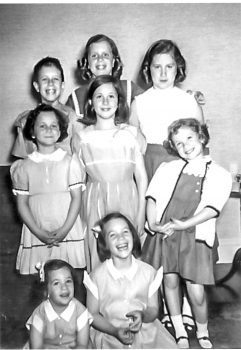
Having realized that our outlooks on life are similar, we talk about politics, books, and health. But we also get into discussions of what we remember of our childhood. This, to me, is the best. I can’t do this quite the same way with friends. No matter how close a friend is, there are no memories of sharing a bedroom, suffering from a parent’s OCD, or dealing with childhood chubbiness. Some of the discussions we’ve had at cousins lunch have shed new light on where I came from and how those early life experiences have affected who I am now.
Cousins are different from friends. In some ways, I’m closer to my cousins, in other ways closer to my friends. Put the two together, and my life is definitely richer.

